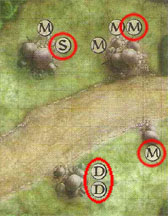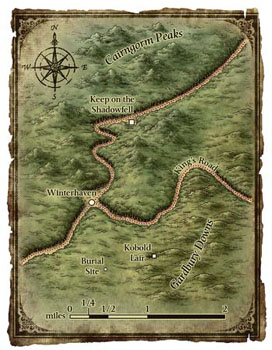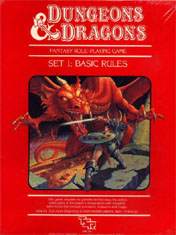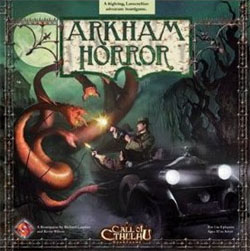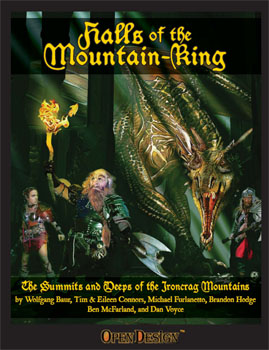Most published adventures are designed around a structure that looks like this:

You start at the beginning (Blue), proceed through a series of linear scenes (Yellow), and eventually reach the end (Red).
Occasionally you may see someone get fancy and throw a pseudo-option into things:

But you’re still looking at an essentially linear path. Although the exact form of this linear path may vary depending on the adventure in question, ultimately this form of design is the plotted approach: A happens, then B happens, and then C happens.
The primary advantage of the plotted approach is its simplicity. It’s both easy to understand and easy to control. On the one hand, when you’re preparing the adventure it’s like putting together a scheduled to-do list or laying out the plot for a short story. While you’re running the adventure, on the other hand, you always know exactly where you are and exactly where you’re supposed to be going.
But the plotted approach has two major flaws:
First, it lacks flexibility. Every arrow on the plotted flow-chart is a chokepoint: If the players don’t follow that arrow (because they don’t want to or because they don’t realize they’re supposed to), then the adventure is going to grind to a painful halt.
The risk of this painful train wreck (or the necessity of railroading your players) can be mitigated by means of the Three Clue Rule. But when the Three Clue Rule is applied in a plotted structure, you run the risk of over-kill: Every yellow dot will contain three clues all pointing towards the next dot. If the players miss or misinterpret a couple of the clues, that’s fine. But if they find all of the clues in a smaller scene, they may feel as if you’re trying to spoon-feed them. (Which, ironically, may cause them to rebel against your best laid plans.)
Second, because it lacks flexibility, the plotted approach is inimical to meaningful player choice. In order for the plotted adventure to work, the PCs must follow the arrows. Choices which don’t follow the arrows will break the game.
This is why I say Don’t Prep Plots, Prep Situations.
NODE-BASED SCENARIO DESIGN
Part 2: Choose Your Own Adventure
Part 3: Inverting the Three Clue Rule
Part 4: Sample Scenario
Part 5: Plot vs. Node
Part 6: Alternative Node Design
Part 7: More Alternative Node Designs
Part 8: Freeform Design in the Cloud
Part 9: Types of Nodes
ADVANCED NODE-BASED DESIGN
Part 1: Moving Between Nodes
Part 2: Node Navigation
Part 3: Organization
Part 4: The Second Track
Part 5: The Two Prongs of Mystery Design
Part 6: Node-Based Dungeons
THE SECRET LIFE OF NODES
Part 1: Secret Life of Nodes
Part 2: Node-Based Campaigns
Part 3: Fractal Nodes
Part 4: Nodes Aren’t Everything
Part 5: Naturalistic Node Design

